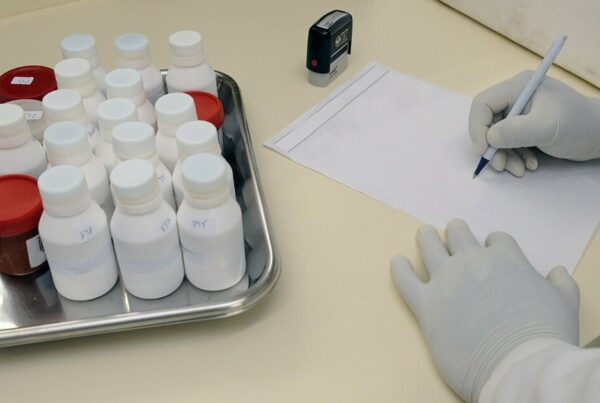The management of clinical trials is getting more difficult every year. The increasing scale and complexity of studies lead to more protocols per patient, demands for more intricate financial and human resource management, and better access to real-time data by relevant stakeholders.
Currently, the common systems are taking the strain for many, but as these demands grow, others are switching to more complex and robust management systems to cover their needs. These are programs that can integrate or replace many of the individual systems currently used and that promise to streamline processes, increase compliance across the board, and generally save money while maintaining or improving security.
These are the clinical trial management systems, and to better understand what they are, how they work, and how to pick the right one, let’s first go over the role of clinical trial management and how it’s changing.
Clinical Trial Management
There are plenty of moving parts to a clinical trial, and with each of them comes the need for adequate management. Further, sites with multiple trials running either concurrently or sequentially have increased complexity to keep in mind. As such, the role of clinical trial management is a substantial one and one in which there are plenty of opportunities to fail.
The three most important parts of trials for sites to manage are typically:
- Patient enrollment and engagement – This stage of the trial represents about 40% of the overall budget and is therefore a critical focus of trial management. With the vast majority of trials failing to recruit enough patients by the deadline, good management in this stage is the key to becoming one of the 20% that succeed.
- Budget adherence – site managers need to make sure that they’re getting paid, that the patients are receiving their honorariums or other incentives and that these outgoings are in line with the planned expenses.
- Workflow management – This is essentially the assurance that the trial is being run in accordance with protocol. With many sites, there are concurrent studies running, and this provides a challenge in terms of keeping them all in perspective, and knowing when and so how to execute on all these studies is a matter of managerial importance.
For many sites, trial management is run on Excel. While this software can handle many aspects of trial management, it’s not a bespoke solution, and as a result, is a much more hands-on method requiring accurate data inputs and functions. Systems that are not specifically designed for trial management also increase the risk of lost data, corrupted data, and unsecured data.
For these and other reasons, sites choose to make use of specialized management systems for their clinical trials. These are the CTMS.
The Role and Benefits of Clinical Trial Management Systems
There is an increasing adoption of CTMS as more people become aware of the significance and efficiency of these products in their trials. R&D costs are increasing, and this alone drives the implementation of more efficient systems, but there are other factors and roles that influence the adoption of CTRM.

First though, when looking at the strength of a CTMS, the primary benefits of a good CTMS system are in the centralized repository that is simple to manage. This helps to simplify all of the moving parts that come with trial management. From there, it’s a simpler task to achieve the following:
- Compliance – this can be with legal protocols, in-house guidelines, or other stakeholder expectations and standards.
- Generate reports – CTMS allows for the standard monthly or bi-monthly reports to be generated quickly and accurately.
- Spot issues – The centralized system allows for access to clear and current data where necessary and can facilitate the finding of any outliers or inconsistencies as they arise.
- Better transparency – Some systems allow for a unified database containing data from the EDC, safety databases, ePRO, etc., and can facilitate the adherence to greater transparency, as is being pushed by the new EMA clinical trial regulations.
- Better data management – As mentioned, a specially-designed CTMS is a huge step up in efficiency from a standard spreadsheet, and allows for faster entry, access, and processing of data.
- Better monitoring – These features create an easy-access monitoring system that can be used to follow the trial progress from anywhere, and by anyone with authorized access.
- Better security – Designed for scalability, a good CTMS can be a secure spot for larger amounts of data.
So, a well-made CTMS has the potential to significantly streamline the current processes and boost the effectiveness of trials with additional features. Next, we’re going to take a more detailed look at how they do this, and hone in on some of the features you should be on the lookout for if you’re considering switching to a CTMS.
Clinical Trial Management System Features
Some of these features may be associated with electronic data capture (EDC) systems, and these are also commonly used by sites. However, there are some differences in how they’re applied, and we’ll go over some of those now.
Depending on your scope and size, the features in the ideal CTMS will vary in detail and number. Here’s a list of some of the most common and generally the top most utilized features in CTMS:
- Management and tracking of documentation – CTMS can help to manage, review and even create essential documents for the study. They can facilitate the approval of trial documentation, and track them through their lifecycle. CTMS can even create and manage the Trial Master File electronically.
- Overall project management – CTMS features can keep track of project activities, timelines, and available and applied resources, and provide oversight of trials accordingly. They can track this progress at multiple levels, facilitate communications within and between teams, and coordinate activities across departments. They’re also good for tracking changes and submissions.
- Real-time tracking of milestones – Integrated features can include the CRF and eCF forms as well as the electronic data capture (EDC) processes, and provide a summary of each. Key milestones can be illuminated and adherence to protocols and budgets can be tracked accordingly. Approval tracking is a good feature, allowing sites to keep track of institutional review boards, ethics committee outcomes, and other regulatory approvals.
- Detailed financial management – a key feature of CTMS is their ability to efficiently track and project the costs associated with trials. Both incoming grants and outgoings, salaries, incentives, etc., can all be managed with CTMS. They can also cover any disclosures.
- Simplified human resource management – Site monitoring and subject enrollment fit under the feature list of most CTMS and can provide ease of management of things like site visits and trip reports, as well as covering the roles and responsibilities of those involved.
- Better clinical management – Adherence to protocol here is important too. Supporting the workflows mentioned in the first section comes under this feature of CTMS. Quality criteria can also be monitored to make sure that the conduct of the clinical side of the study sticks to all requirements.
- Better Investigator management – The communications features in CTMS allow for detailed management between sponsor and their investigators. It improves accountability, allows for more accessible monitoring, and can allow sponsors to keep track of study data.
- Simplified materials management – The delivery and storage of materials can be overseen, even with multiple service providers involved. Labs, medical, and CROs can all be managed with a single system and the logistics of delivering to and from those involved can be simplified with a single CTMS.
- Data storage and protection – CTMS provides archiving features, analytics, security monitoring, and other useful solutions to storing, processing, and securing data. They can enforce multi-factor authorization, monitor and alert in response to security risks or threats, and provide encrypted communications channels for increased security.
- Integrations – This is a key feature to look out for, and one we’ll go over in more detail shortly. A great value point in a CTMS system is its ability to interact with external programs and devices. Wearable monitors, payment processing systems, training platforms, etc., can potentially be linked up to the system for simplicity of monitoring and management.
As you may have gathered by now, these features represent a range of uses for CTRM, some of which are covered in current systems, such as EDC and similar, and many will have more utility for busy sites with multiple or complex trials. Not all features will be necessary for everyone, and if you’re wondering whether your EDC can handle everything you need, it might be helpful to isolate the roles of both and compare them.
EDC vs CTMS Clinical Trial Applications
EDC and CTMS can sometimes be confused with one another, especially if only one or neither is currently being deployed. The confusion likely stems from the fact that EDCs are a lot more ubiquitous with clinical trials than CTMS are, at least at present.

CTMS, on the other hand, is totally optional and is a tool for managing a lot of the components of the trial. These CTMS can have a wide range of functionality and can be used in different ways depending on the trial. We’ll look into some of these functionalities as they relate to the specific needs of trials in the next section.
The overall concept, though, is to organize the workflow of the study at the site or CRO level. While these products differ, they’re complementary to one another and it’s usually a good idea to use both. In some instances, CTMS are designed to incorporate EDC into their functionality, further simplifying the application of both.
As trial demands increase in complexity and volume, a simple EDC system may not be enough to keep up. Protocols in phase ii and iii studies are steadily increasing in number. Each patient currently has an average of around 260 procedures, more endpoints than ever before, and an increasing number of investigation sites.
This significant leap in complexity corresponds to a significant leap in management demands, and as such, more sites are adopting CTMS. Let’s take a look at some of the factors that influence their decisions.
How to Choose Your Clinical Trial Management System
There are countless vendors for CTMS, many will offer generalized features that cover most cases, and some will have more niche features that are useful for specific trial types or complexities. Here are some of the things to consider when looking to implement one:
- Integrated systems – These may be the most cost-effective systems because they facilitate smooth transactions between sites and their data. The major integration feature should be with the EDC, but many platforms can integrate with billing platforms and electronic medical records too. These integrations boost compliance and reduce on duplicate entries. It’s also possible to send invoices automatically with billing integration features, which can follow payment schedules and reconcile payments inherently. This streamlines the role of the finance teams and can provide a much faster and simpler management platform as a result. Picking a product with strong integrations can therefore go a long way to reaching the time and resource-saving goals of using a CTMS.
- Security – this is arguably the most critical feature of a CTMS, though one that should ideally be incorporated by default in every platform. It’s imperative to choose a system that features strong security compliance, from both a patient and a site perspective. The system must be trustworthy for it to last, and function in accordance with the IT infrastructure available. Data backup of both individual and group data, as well as authorized access and privacy compliance, are critical to earning this trust, so a focus on this feature is a high priority. The ability to create a clear paper trail is also important. Auditing pathways need to be present and easy to follow, and a secure log of document history helps with this.
- Ability to scale – Employing a new CTMS is potentially a large undertaking and a serious commitment. If your organization is likely to experience growth over the foreseeable future, the ability of the system to accommodate this scalability is important. Whether there will be additional sites, additional trials, increased complexity, or any other factor of growth, your choice of system should involve this consideration.
- Flexibility – A system with numerous features allows for a more rapid adaptation to current trends or demands. This will of course be more costly in the initial period and may present a steeper learning curve, but if you want to be ready to change lanes in a hurry, a diverse set of features could help with this.
- Storage – This is as simple as deciding whether you want your data to be held in the cloud or on-site, both of which have certain benefits and drawbacks that will apply to your specific case.
- Support – That learning curve we mentioned can be greatly eased with the help of good support from the vendor. The undertaking of even a simple CTMS is no small feat and will require extensive training to implement safely. While the product itself is the most important consideration, picking the right vendor can help tremendously with the onboarding process.
These considerations cover most of the bases for a new CTMS, but there will be factors specific to your case that need to be included. In general, the more complex and diverse the product’s scope is, the more you’ll spend and the harder it will be to learn; however, the more narrow the scope, the less flexibility you’ll have in terms of complexity, range, and scale of use.
Conclusion
The CTMS clinical trial sites choose to use should reflect their current and future needs. With the increasing scale and complexity of trials, sites need to keep on top of the corresponding needs for management, and for many, the mandatory systems are starting to fall behind.
A clinical trial management system can provide a centralized platform for the management of many factors in the trial process, and as they grow in popularity, it’s likely to see them take over the role of common systems like the EDC, and others.
Choosing the right one for your site means selecting based on your need to scale and adapt to trends, but any system should be secure and come with a streamlined onboarding system to help with the training.







